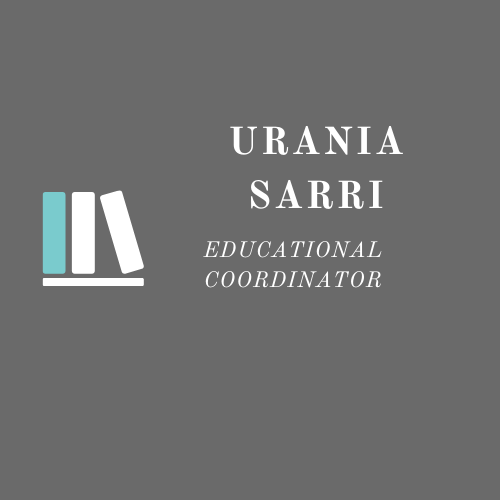Principles, Strategies And Methods For Successful Integration
There is rapidly growing literature based on research findings referring to the pedagogical, instructional and management strategies that have proven to be effective in teaching culturally and linguistically diverse students:
- Self-improvement regarding the teacher’s personal stereotypes and prejudices that might affect the teacher-student relationship. As mentioned in the previous section, self-examination is essential in order to acquire the skills needed to teach diverse students (Cotton, 1993; Banks, 2001). Moreover, teachers need to acquire knowledge on the variations of learning and teaching methods and become socioculturally informed through teacher education programs and methodology courses (Actuna, 2005).
“Teacher education programs especially methodology courses, need to help trainees become more aware of variations in learning and teaching. Teachers must be socioculturally informed in methodologies”. (Actuna, 2005:106)
Despite the worthy efforts and implementation of theories it is very difficult for educators to understand the needs and difficulties of culturally diverse students unless they have experienced similar situations (Zou, 1998) “Unless the process of second language acquisition is explored from the immigrant’s perspective, it is impossible to understand the complex psychological process involving the redefinition of self and the motivation to achieve in spite of the difficulties faced in a school setting” (Zou, 1988:4)
Research indicates that lack of consideration of variations in cultures of learning can lead to frustration and failure in the language classroom (Actuna, 2005).“In choosing materials and approaches the teachers must consider the students’ sociocultural background. Ignoring the students’ norms and expectations- that is what they bring to the classroom- is denying the learners’ experiences” (Actuna, 2005:100).
- Cooperative learning: Researchers have supported cooperative learning as an important tool for the promotion of intercultural harmony and an effective type of intervention in order to modify the children’s racial attitudes with positive effects on diverse students’ academic achievement (Banks, 2001; Cotton, 1993). In heterogeneous groups there is less stress, students experience achievement, self-esteem increases, positive attitudes develop toward school, and students better appreciate each group member’s abilities. The cultural split (Ortemier,2000) that occurs when students lose self and identity and try to define themselves in either the home culture or the culture of the host country can narrow through cooperative learning. According to Ortemier teachers have to create a sense of belonging to a community and validate the immigrant students’ culture. This way students can explore their identities through cooperation (Ortemier, 2000).
“The goal for ESL teacher is to find a way to help students overcome their own prejudices, to educate them about other cultures and to empower
them by establishing a sense of community and identity” (Ortemier, 2000: 10).
Elements of successful cooperative activities (Cotton, 1993) are: positive interdependence, individual accountability, group processing with group discussions, teacher feedback and input, teaching interpersonal and small group skills and face-to-face interaction. Allport (Allport, 1954 quoted in Cotton, 1993) has identified the characteristics for effective interracial contact situations as follows:
- they must be cooperative rather than competitive,
- the individuals should experience equal status,
- they should have shared goals
- the contact must be sanctioned by authorities, the teacher.
Cooperative teaching strategies increase not only the diverse students’ academic performance but also the mainstream students’ (Banks, 2001).
Research has found that in order to be successful the strategies and methods to achieve integration must include specific elements (Cotton, 1993):
- Intercultural contact, which should be extracurricular, social and academic, frequent and sustained.
- intergroup contact, which is also very important. There is an opportunity to form personal relationships within the group members and to find common interests or characteristics as well as to specify the social norms needed for the association between the different groups.
- opportunities for cooperation and achievement of group goals through cross-cultural interaction.
Research has demonstrated that the absence of the above requirements can lead to deterioration of cross cultural attitudes and behavior. Intercultural contact although necessary does not always lead to integration. Tasks assigned to culturally mixed groups must be explained and the difficulty degree should correspond to student abilities so that groups do not experience failure for which other group members might typically blame the diverse students. Unless it is handled properly, intergroup contact may do more harm than good to the students’ relationships (Cotton, 1993).
- Elimination of prejudices and empathy development through the development of critical thinking. According to research, eliminating prejudices and cultural biases and replacing these with accurate information and empathy can lead to a positive attitude so that intergroup relations improve (Cotton,1993). Prejudices are mostly based on overgeneralizations and faulty thinking. Critical thinking limits prejudice. We can teach our students nonprejudicial thinking by teaching them to think critically (Cotton, 1993; Walsh, 1988; Banks, 2001)
Walsh states the following strategies for teaching critical thinking (Walsh, 1988):
- intellectual curiosity,
- objectivity in decision making based on evidence,
- open mindedness by the use of evidence,
- flexibility in beliefs,
- intellectual skepticism by testing hypothesis,
- intellectual honesty,
- being systematic by consistent use of reasoning in order to reach a conclusion,
- persistence,
- decisiveness,
- respect for other viewpoints.
Through critical and creative thinking, the intercultural model is able to support the anticipations of those societies who wish to co-exist in the global ecumenical society where people can become a team in which, although not homogeneous, members are connected by common values and without losing identities. (Papas, 1998) “Education is one of the most powerful means in order to materialize such anticipations and educators have the future of mankind in their hands” (Papas, 1998:297).
Other means of prejudice reduction and empathy development are (Cotton, 1993): films, dramatizations, books, role playing and simulation games with an initial focus on one’s own culture, identification of similarities between the two cultures, and counterstereotyping (i.e. focusing on sample individuals and positive idols that represent a specific culture).
However, these must be used very carefully with avoidance of manipulation and direct antiprejudice lessons/ films as, according to Walsh, direct teaching of prejudice reduction techniques may be ineffective (Walsh, 1988).
4-. The importance of classroom climate must be stressed. Teachers should be careful with the messages they convey when they carry out classroom arrangements, in one-to-one interaction, when expressing high expectations of students, during expressions of encouragement and when they show closeness and affection (Cotton, 1993). Teachers should pay attention to the verbal and non-verbal interaction between the teacher and the students as well as to the statements teachers make when they refer to ethnic groups (Banks, 2001). Public announcements of achievements should be avoided and responsibilities in class management should be equally assigned to all students. Displays in the classroom should reflect the cultural background of all students (Cotton, 1993).
- Development of self-esteem. As research suggests, teachers must not treat all students alike but instead meet each one’s distinctive needs. Only by differential treatment can we offer them access to equal educational opportunities (Banks, 2001). Research has also demonstrated that there is a high correlation between self-regard and positive regard for diverse persons (Cotton, 1993). One reason for students’ low academic performance may be teachers’ low expectations and inequitable treatment of cultural diverse students (Conchas, 2001). These, in turn, may cause low self-esteem and negative intergroup relations. Other reasons for students’ low self- esteem include: lack of cultural awareness, a curriculum that does not reflect the life experiences of the learners and a lack of institutional support system (Cotton, 1993). Studies on theories of learning have shown that
“ students internalize the conceptions of themselves that are institutionalised within the ethos and structures of school. Related to Merton’s (1968) self-fulfilling prophecy this theory states that students academic achievement will increase if the adults within the school have high expectations for students, clearly identify the skills they wish to learn and teach those skills to them” (Banks, 2001: 15).
Research indicates that the conditions for self esteem building activities are the encouragement by the teacher, a close teacher- student relationship, the experience of success and activities based on the students cultural background (Cotton, 1993).
Studies have concluded that social segregation is the primary reason for the development of low self –esteem (Tsiplitaris, 2000). Marginalized students may become either passive or aggressive in time. At first, they would try to respond to the teacher’s or the group’s expectations but when they realize the difficulties to do so, they become disappointed and develop defensive attitudes. They would always be willing to help in the classroom and, in case their efforts are not recognized, they become aggressive in a way to attract attention. Provided the teacher realizes these first “heroic” offers in the classroom as a request for recognition and sympathy, these students can be helped and may become committed to their student responsibilities. Otherwise, they withdraw and become worse. Therefore, teacher attitudes are very important in either marginalisation or integration of the underachieving students (Tsiplitaris, 2000).
- Multicultural activities such as discussions about cultural differences provide learners with accurate information about cultural groups and demonstrate similarities among different cultures. Elements of the diverse students’ culture need to be incorporated in teaching instead of relying on textbooks (Cotton, 1993). Banks argues that the implementation of a multicultural curriculum based on democratic ideology where cultural and ethnic diversity are considered as positive, in contrast with an ethnocentric one, is necessary in multicultural teaching (Banks, 2001).
The teacher should carefully review the material for possible cultural biases and stereotypes. The curriculum must include a variety of cultural traditions in a way that educational purposes, which have been set within the framework of a multicultural society, can be accomplished (Papas, 1998). Classroom participation and academic performance of diverse students increase when teaching strategies are consistent with the students’ culture (Banks, 2001).
Foreign language teaching can be especially effective in eliminating discrimination in the classroom. According to Tomlinson, quoted in Papas, the EFL class can reduce racist attitudes and can convey messages with multicultural purposes (Papas, 1998).
- The way teachers respond to intercultural tension and conflicts is very important.
Incidents of intercultural tension should be used by teachers as challenges for the teaching of multicultural principles (Cotton, 1993). Students should be engaged in discussions so that the consequences of such incidents are understood. The focus of the teacher’s attention should not be either on the victim or on the person who caused the incident. The teacher should rather focus on the problem and the relationships among students (Unesco, 1997 quoted in Haramis, 2000).
8.Contact with parents and encouragement for parents’ involvement is desirable, while at the same time communicating respect for and interest in their culture. The teacher can obtain information about the student’s experiences and needs with the help of the parents (Cotton, 1993).
Several additional principles involved in teaching young learners were also taken into consideration:
- Young learners learn by being involved in activities and experimenting with language, making hypotheses about how language works (Brewster 1991, Williams 1991).
- Having fun while learning is a very important factor in the young learners’ classroom (Rixon, 1991).
- Learning by doing and project work can enhance communication between students with a different culture, promote involvement and generate motivation (Hutchinson, 1996).
- When students write about their own lives, they get a sense of achievement and are able to communicate their own world and culture using language as a bridge (Hutchinson, 1996). This way, a climate of confidence is created that encourages a positive self-image and self esteem. (Williams and Burden, 1997).
- REFERENCES
- Allport, G., 1954, The Nature of Prejudice. Reading, MA: Addison-
Wesley
- Altrichter, H., Posch, P., Somekh, B., 1993, Teachers investigate their
work, Routledge
- Banks J. A., 2001, Cultural Diversity and Education, Allyn & Bacon
- Brewster J., 1991, What is good primary practice? ,in Brumfit C., Moon
J., & Tongue R., Teaching English to Children: from practice to
principle, Harper Collins Publishers, London
- Conchas G. Q., 2001, Structuring failure and success: Understanding the variability in Latino school engagement, Harvard Educational Review Vol.71, No. 3
- Cotton K., 1993, Fostering Intercultural Harmony in Schools: Research Finding, School Improvement Research Series, NW Regional Educational laboratory, http://www.nwrel.org/scpd/sirs/8/topsyn7.html
- Cross Curricular Framework of Programme of Studies of Compulsory Education, Athens, 2002, Ministry of Education and Religious Affairs, Pedagogical Institute
- Cummins J., 2003, Rights and responsibilities of educators of bilingual-bicultural children http://www.iteachilearn.com/cummins/rightsresponsibilitiesbilinged.html
- Cummins J., 2003, Bilingual children’s mother tongue: Why is it important for education?
http://www.iteachilearn.com/cummins/mother.htm
- Damanakis, M., 1997, Η Ελλάδα ως χώρα υποδοχής μεταναστών, in Η εκπαίδευση των Παλλινοστούντων και Αλλοδαπών μαθητών στην Ελλάδα, Διαπολιτισμική Προσέγγιση, Athens, Gutenberg,
- Dogancau-Actuna Seran, Intercultural communication in English Language Teacher Education, ELT Journal Vol.59/2 April 2005, Oxford University Press
- Easter M., Yonkers V., Teaching diversity and cross-cultural differences: does it work?, Proceedings of the 2003 Association for Bussiness Communication Annual Convention www.businesscommunication.org/conventions/Proceedings/2003/PDF/38ABC03.pdf-
- Haramis P., 2000, School Without Borders, ΟΕΔΒ, Αthens
- Hutchinson, T., 1996, Project Work in Language Learning, The
Language Teacher Online 20.9
http://langue.hyper.chubu.ac.jp/jalt/pub/tlt/96/sept/prog.html
- Johnson,R. M., & Johnson D.W., 1988, Cooperative learning: two
heads learn better than one, from In Context, Transforming
Education.(1C #8), P.34 www.context.org/ICLIB/IC18/Johnson.htm
- Kanga E., 2002, Γλωσσική και πολιτισμική πολυμορφία: Διαθεματικές
προσεγγίσεις στις ξένες γλώσσες, Επιθεώρηση εκπαιδευτικών
θεμάτων, Ειδικό τεύχος στην διαθεματικότητα ,Τεύχος 7, Αθήνα
- Magos, K., 2005, Θρανία που αλλάζουν, Από την αφομοίωση των
εθνοπολιτισμικών διαφορών στη διαπολιτισμική εκπαίδευση
http://www.epohi.gr/magos_education_immigrants_issues_342005.htm
- Nikolaou, G., 1997, Ενταξη και εκπαίδευση, Λέσχη Εκπαιδευτικών,
Issue 19
- Ortemier C. M. , 2000, Project Homeland: Crossing cultural
boundaries in the ESL classroom, TESOL Journal, Vol. 9 No 1
- Papas, E.A.,1998 , Διαπολιτισμική Παιδαγωγική και Διδακτική , Αthens
- Pedagogical Institute Dropouts Survey, 2000
http://www.pi-schools.gr/programs/par/drop_2000.htm
- Pantazis, V., 1999, Βασικές αρχές της Διαπολιτισμικής Εκπαίδευσης,
ΤA ΕΚΠΑΙΔΕΥΤIKΆ, 49/50
- Pedagogical Institute, 2004 , Oδηγός για την εφαρμογή της Ευέλικτης
Ζώνης, Τeacher’s book, Mιnistry of Eduction and Religious Affairs,
Athens
- Rixon , 1991, The role of fun and games activities in teaching young learners, in Brumfit C., Moon J., & Tongue R., Teaching English to Children: from practice to principle, Harper Collins Publishers, London
- Tsiplitaris, A., 2000, Ψυχοκοινωνιολογία της σχολικής τάξης, Εκδόσεις
Περιβολάκι, Αθήνα
- Unicef, 2001, Discrimination- Xenophobia and the Greek Educational System, Research Findings unicef.gr/reportsracism.php#
- Van Hook, C. W., 2000, preparing Teachers for the Diverse Classroom: A Developmental Model of Intercultural Sensitivity, ED 470 878 http://ericeece.org/pubs/books/katzsym/vanhook.pdf
- Van Lier, L., 1988, The classroom and the language learner, Longman
29.Vygotsky, L.S., 1962, Thought and Language, Cambridge, MA:
Massachusetts Institute of Technology Press
- Vygotsky, L.S., 1978, Interaction between learning and development, in L.S.Vygotsky, 1978, Mind in society: The development of higher psychological processes, (Eds. M.Cole, V.John –Teiner, S. Scribner,&E. Souberman), Cambridge, MA: Harvard University Press
- Walsh D., 1988, Critical Thinking to Reduce Prejudice. Social
Education 52/4 : 280-282.
- Williams, M., & Burden, R.L., 1997, Phychology for language teachers, Cambridge, CUP
- Williams, M.,1991, A framework for teaching English to young learners
in Brumfit C., Moon J., & Tongue R., Teaching English to Children:
from practice to principle, Harper Collins Publishers, London
- Willis J.,1996, A Framework for task –based learning, Harlow:
Longman
- Zou Y., 1998, Rethinking empowerment: The acquisition of cultural , linguistiC and academic knowledge, TESOL Journal, Vol.7, No 4






